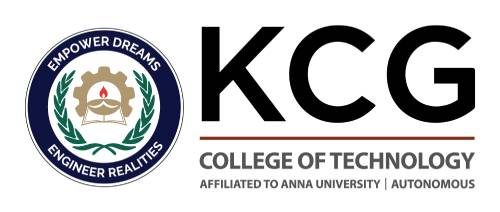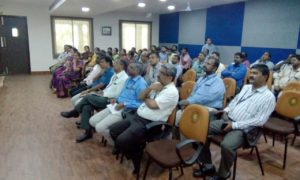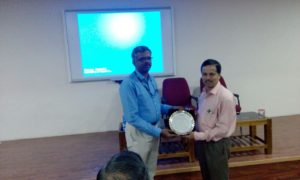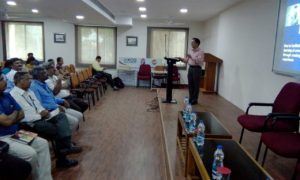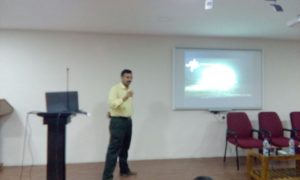TOPIC : WORKSHOP ON VIRTUAL LAB
Date : 20.10.17
Venue : F14
Resource Persons
Dr. K.V. Gangadharan, Professor Mechanical Engineering and Head of the Center for System Design, National Institute of Technology Karnataka, Surathkal, (NITK Surathkal), India
Dr. Pruthviraj U, Applied Mechanics And Hydraulics, Assistant Professor, National Institute of Technology Karnataka, Surathkal, (NITK Surathkal), India
First speaker Dr. K.V.Gangadharan emphasis about the virtual lab and its importance of future.
| Virtual Labs will be made more effective and realistic by providing additional inputs to the students like accompanying audio and video streaming of an actual lab experiment and equipment |
Physical distances and the lack of resources make us unable to perform experiments, especially when they involve sophisticated instruments. Also, good teachers are always a scarce resource. Web-based and video-based courses address the issue of teaching to some extent. Conducting joint experiments by two participating institutions and also sharing costly resources has always been a challenge. With the present day internet and computer technologies the above limitations can no more hamper students and researchers in enhancing their skills and knowledge. Also, in a country such as ours, costly instruments and equipment need to be shared with fellow researchers to the extent possible. Web enabled experiments can be designed for remote operation and viewing so as to enthuse the curiosity and innovation into students. This would help in learning basic and advanced concepts through remote experimentation.
Second speaker Dr. Pruthviraj emphasis about the student internet based experimentation with natural phenomena
Today most equipment has a computer interface for control and data storage. It is possible to design good experiments around some of this equipment which would enhance the learning of a student. Internet-based experimentation further permits use of resources knowledge, software, and data available on the web, apart from encouraging skillful experiments being simultaneously performed at points separated in space (and possibly, time)
For the ‘touch and feel’ part, the students can possibly visit an actual laboratory for a short duration






